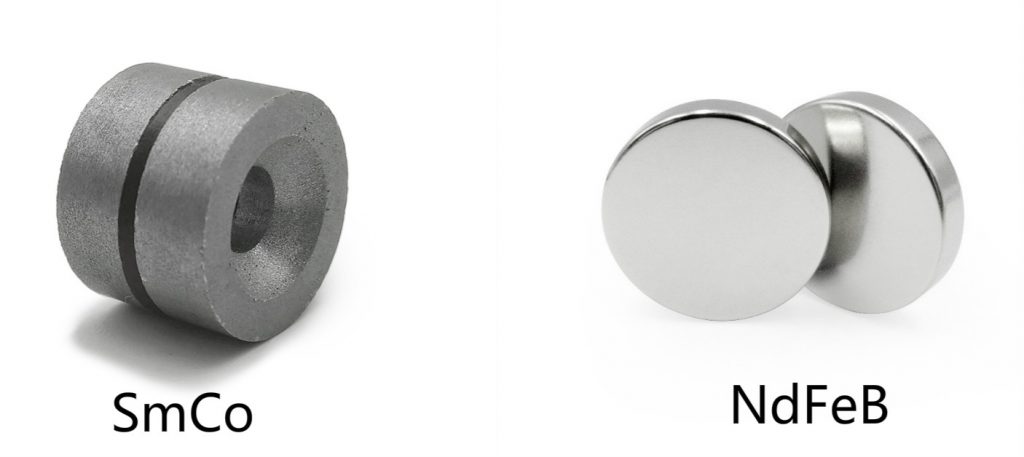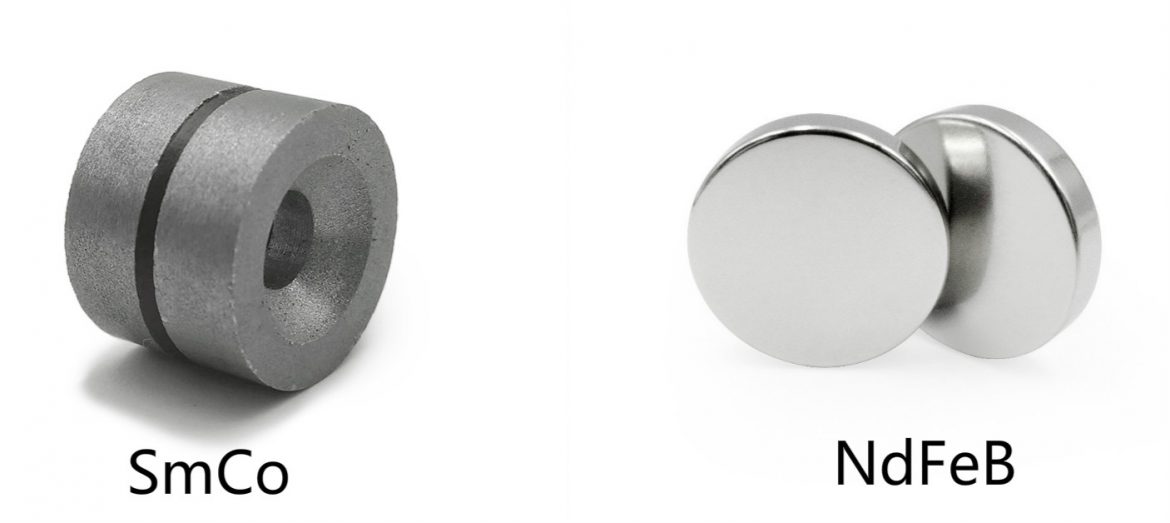Two Main Types of Rare-Earth Magnets
Permanent magnets are highly demanded in modern times. The strongest of all permanent magnet options are rare earth magnets. Their magnet field is very powerful, about 1.4 Tesla, while that of ferrite magnets ranges between 0.5 and 1 Tesla. That’s why rare-earth magnet styles, commonly called neodymium magnets, are said to have a permanent magnetic field. They are applied where permanence is incredibly important. Although rare-earths have high coercivity (resistance to demagnetization), Maximum Energy Product and remanence (strength of magnetic field), their Curie temperature is lower than ferrite magnets’ is. Curie temperature (Tc) is the temperature at which a magnet gets demagnetized. There are two types of a rare earth magnet. They include SmCo and NdFeB magnets.

SmCo
A Samarium Cobalt or SmCo permanent magnet was the first to be introduced in the rare-earth family. It was founded in the 1930s and marketed in the early1940s. Alternatively called Rare Earth Cobalt, CoSm or RECo, Samarium Cobalt is an alloy of either Samarium and Cobalt or Samarium, Cobalt and other elements. Other elements, in this case, may include iron, copper, and Hafnium among others. An alloy of Samarium and Cobalt only, Sm1Co5, is corrosion resistant. On the other hand, an alloy of Samarium, Cobalt and other elements, Sm2Co17, is slightly prone to corrosion. This is because of the few iron (Fe) atoms contained in this kind of a magnet. When working temperature is high, Rare Earth Cobalt is a better option than the NdFeB magnet. Its Curie temperature ranges between 250 and 350 degrees Celsius. Therefore it is considered stable at high working temperature. SmCo magnets can be applied in industries such as mechanical, electronics and marine. Note that they are hard and breakable.
NdFeB
Also called NIB (neodymium, iron, and boron) or neo magnet, the NdFeB magnet is very popular. It is commonly called neodymium or a rare earth magnet. This item is an alloy of neodymium, iron, and boron. Because of this, the magnet is extremely powerful. Despite being small, a neo magnet can lift an object that is many times heavier than itself. Because of this, it is vastly chosen by mechanical and electronic industries. It is used to manufacture wind turbines, generators, Halbach array, automotive sensors, hard-disc actuators and MRI devices among other things. Because of iron atoms in the alloy, NIB magnets are prone to corrosion. They must be plated or coated with materials such as nickel, zinc, copper, and polymer. Coated rare earth magnets do not rust. Like SmCo, NdFeB magnets have extremely powerful magnetic fields. Large pieces have been reported to cause serious bone fractures because of mishandling. In spite of this, NIB magnets are very brittle. They can break easily even though their surfaces are hard. Additionally, their Tc is lower than Samarium Cobalt’s. Therefore SmCo can be great alternatives for neo magnets.
